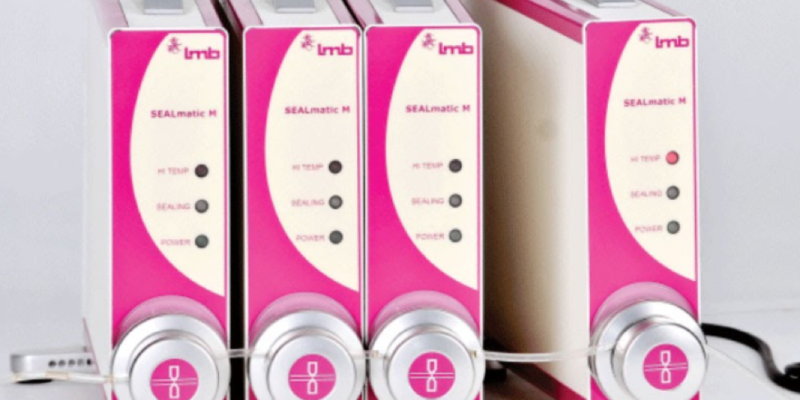Blood tube sealers are devices used in most hospitals for blood collection. They are typically made of plastic with two chambers, one on either side of the middle line of the device.
For added precaution, most sealers have a rubber gasket around the edge so that if pressure is lost for any reason, they will reseal.
Features of Blood Tube Sealer
- The blood tube sealer ensures precise sealing while minimizing mechanical wear.
- The battery status of the device is indicated by the LED.
- Tension-relief arms keep the tubing from slipping during the tube-sealing process.
- To best meet operator needs, the tubing segment can be adjusted to any length.
- The sealing head can be easily removed for cleaning and maintenance.
How Does a Portable Blood Bag Tube Sealer Work?
When tubing is inserted between the sealing heads, the handgun sealer’s arm is pressed. To prevent traction on the tube, the arms grip it. As a result, the moving head squeezes the tubing. Once they are snapped shut, pressure is applied to the one chamber, which forces a small amount of sterile saline into the other. This creates a vacuum and seals the tube.
The blood tube is melted to form a seal into two easily separated wide tear parts. The sealer is designed to seal for PVC tubing with an outer diameter of up to 6 mm.
Types Of Blood Bag Tube Sealers blood tube sealer
- Cordless Sealer. Cordless blood tube sealer that works with both EVA and PVC tubing and is powered by a battery. The lightweight and ergonomic design makes it ideal for mobile donation sites.
- Multi-Purpose Sealer. This sealer can be used for a variety of applications. A single-use and multi-use benchtop blood bag tube sealer. In a multi-setup, up to 8 units can be connected and used as segment sealers with simultaneous sealing.
- Shockproof Sealer. A shockproof and durable benchtop blood bag tube sealer designed for heavy duty use and produces single and multiple seals.








Comments